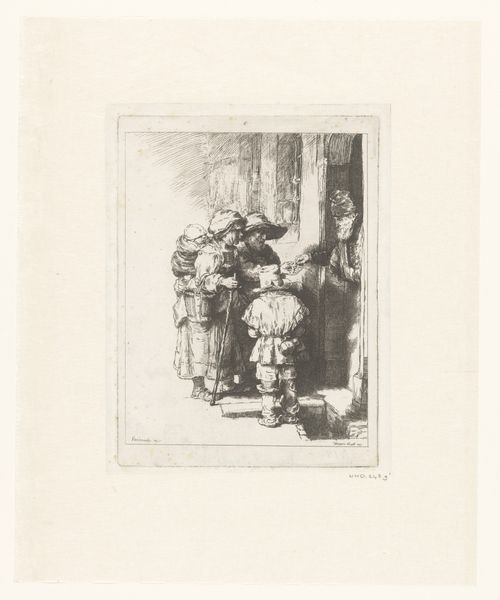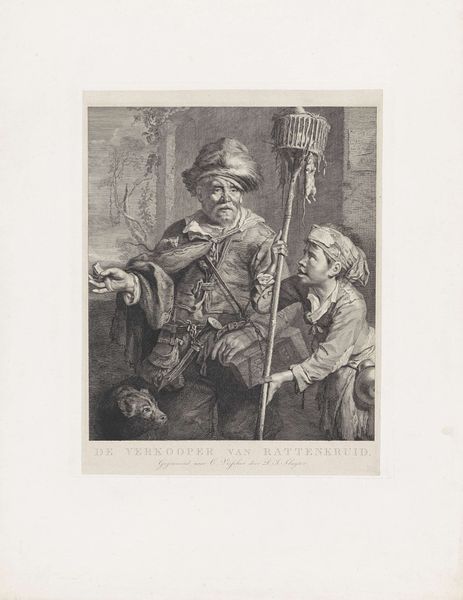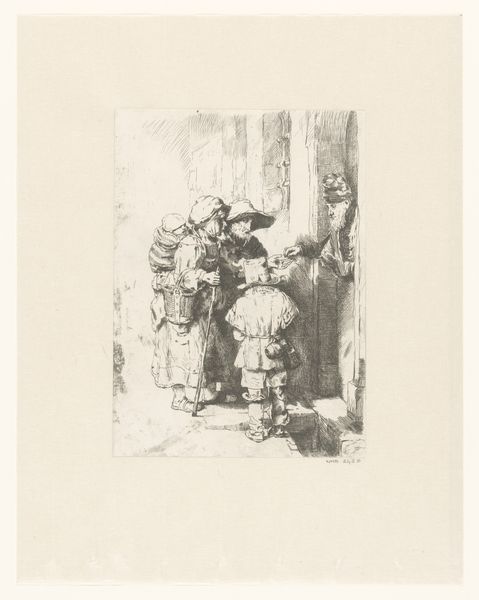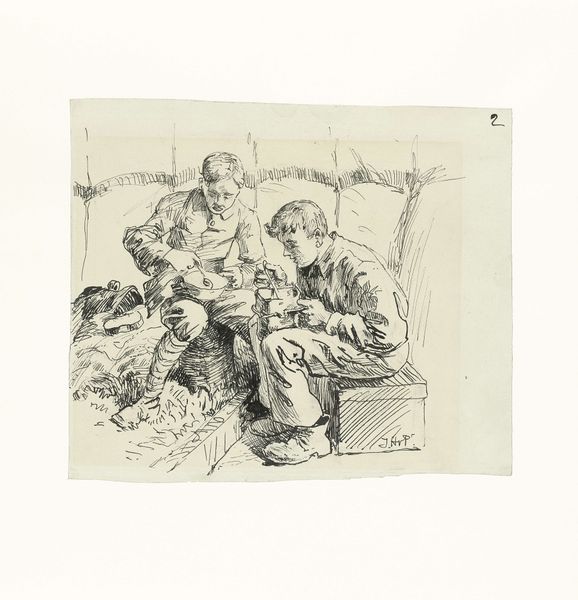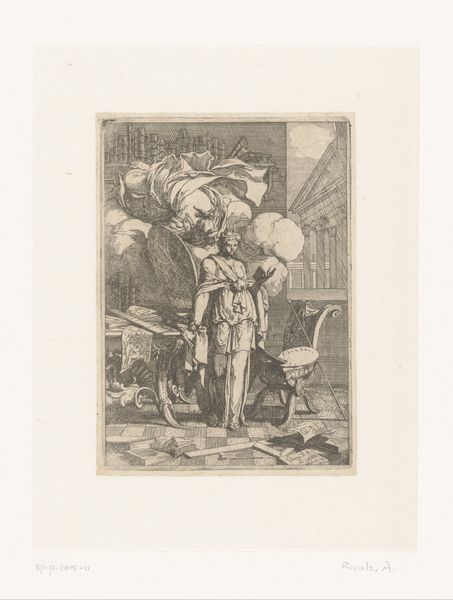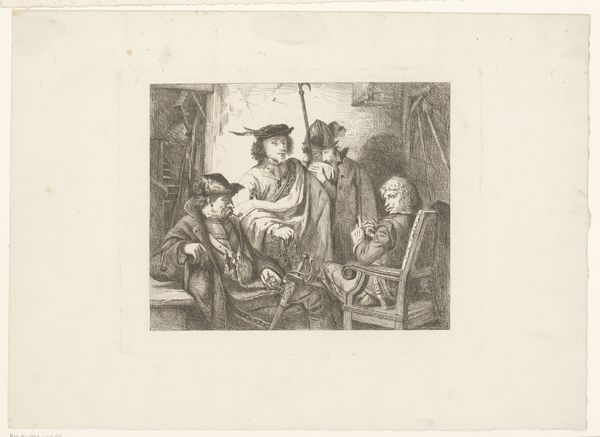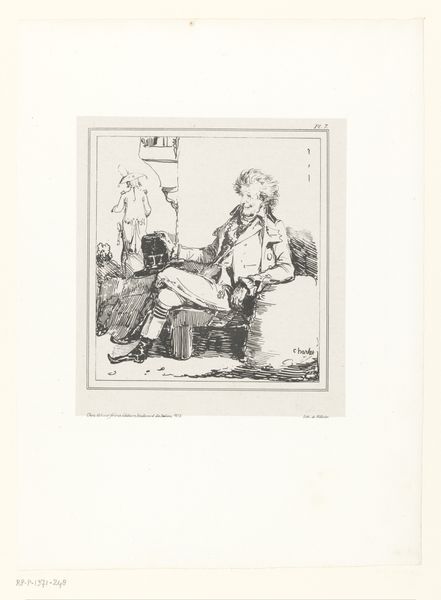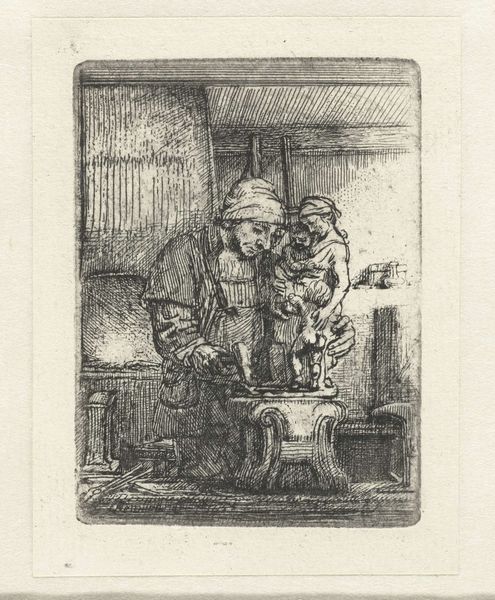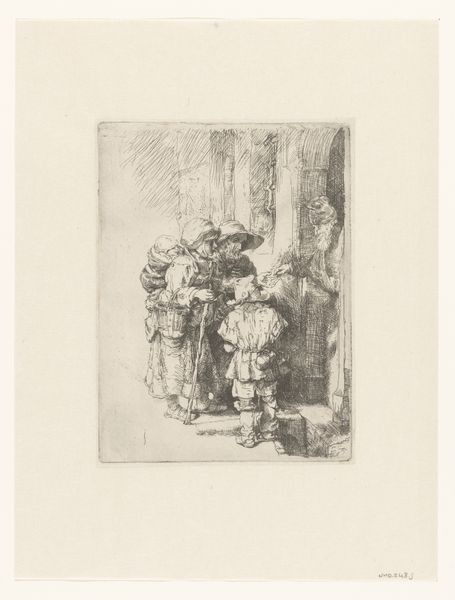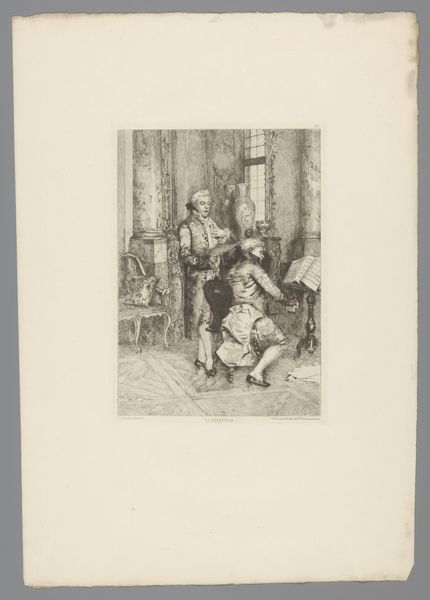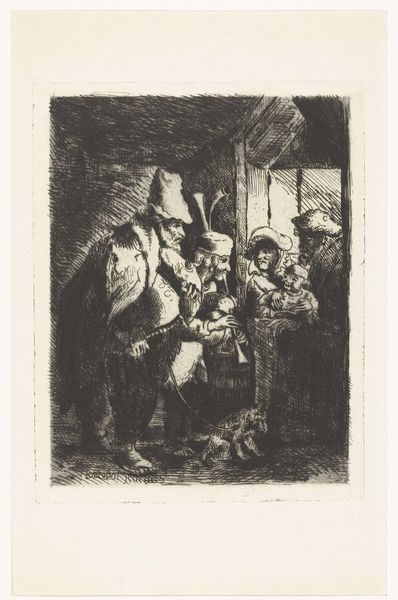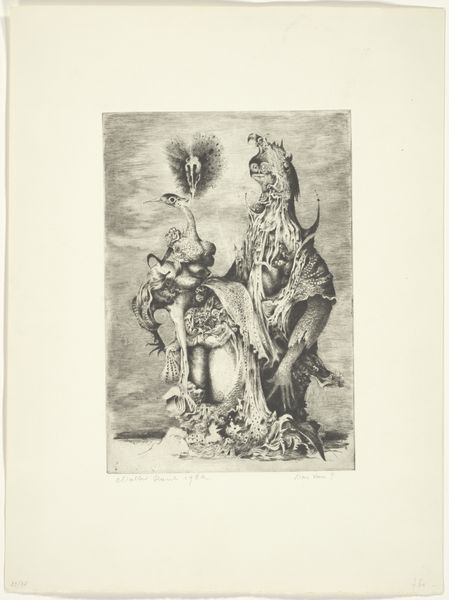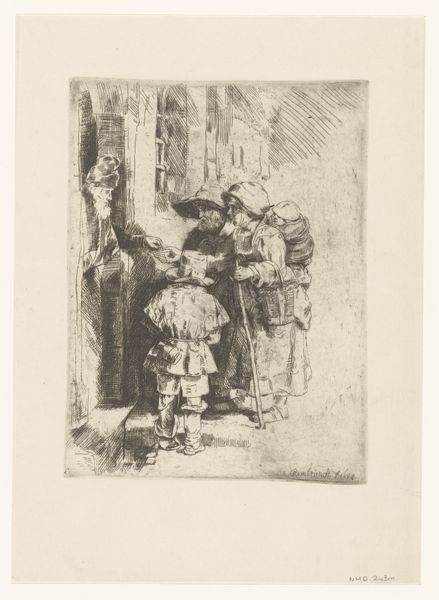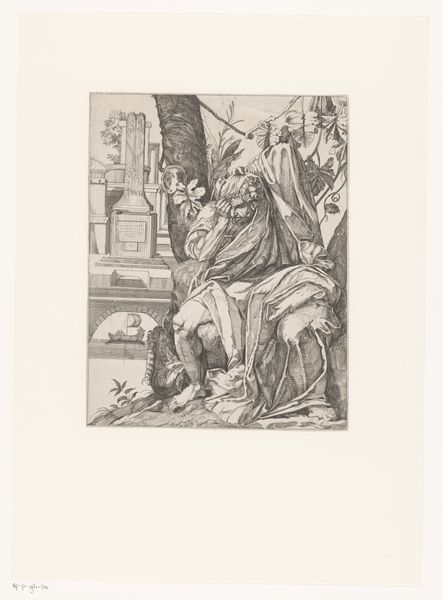
Dimensions: height 262 mm, width 214 mm
Copyright: Rijks Museum: Open Domain
This etching, “Lucella en Ascagnes als liefdespaar,” was created by Johannes Arnoldus Boland. Etching, as a printmaking technique, is quite fascinating because it allows for incredibly fine, detailed lines. The artist covers a metal plate with a waxy, acid-resistant substance, then scratches an image into that coating. When dipped in acid, the exposed lines are eaten away, creating grooves that hold ink. The plate is then cleaned, inked, and pressed onto paper, transferring the image. Look closely and you can see how Boland has used this technique to create a rich tapestry of light and shadow, defining the figures and their surroundings. This process, though indirect, requires considerable skill and control. The quality of the line, the depth of the etching, and the pressure applied during printing all play a crucial role in the final result. It’s this intimate connection between process, material, and the artist’s hand that gives the print its unique character. In Boland's time, the printmaking was more commercial; however, the high level of skills and attention given to the etching elevates it to a higher art form.
Comments
No comments
Be the first to comment and join the conversation on the ultimate creative platform.
